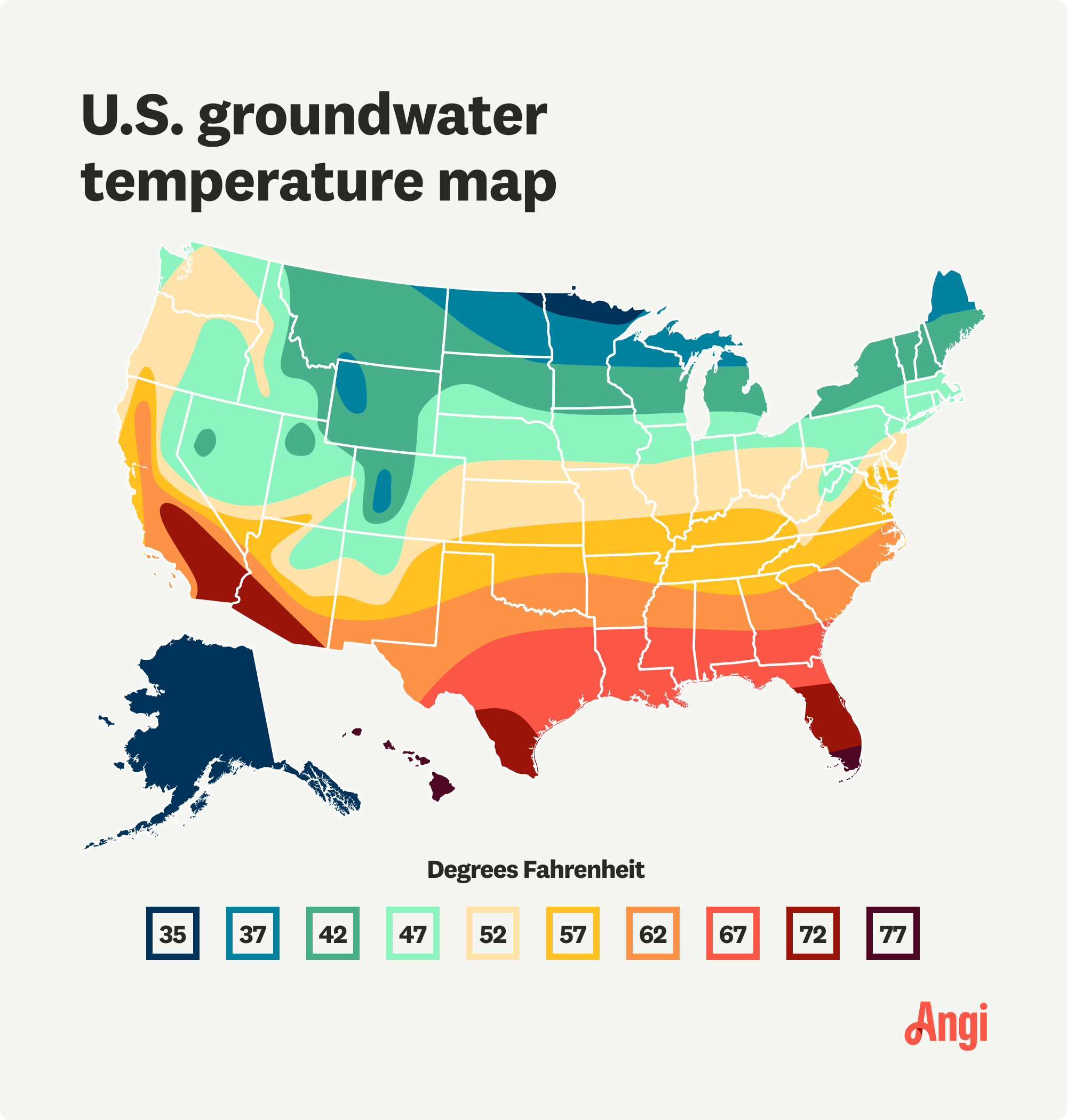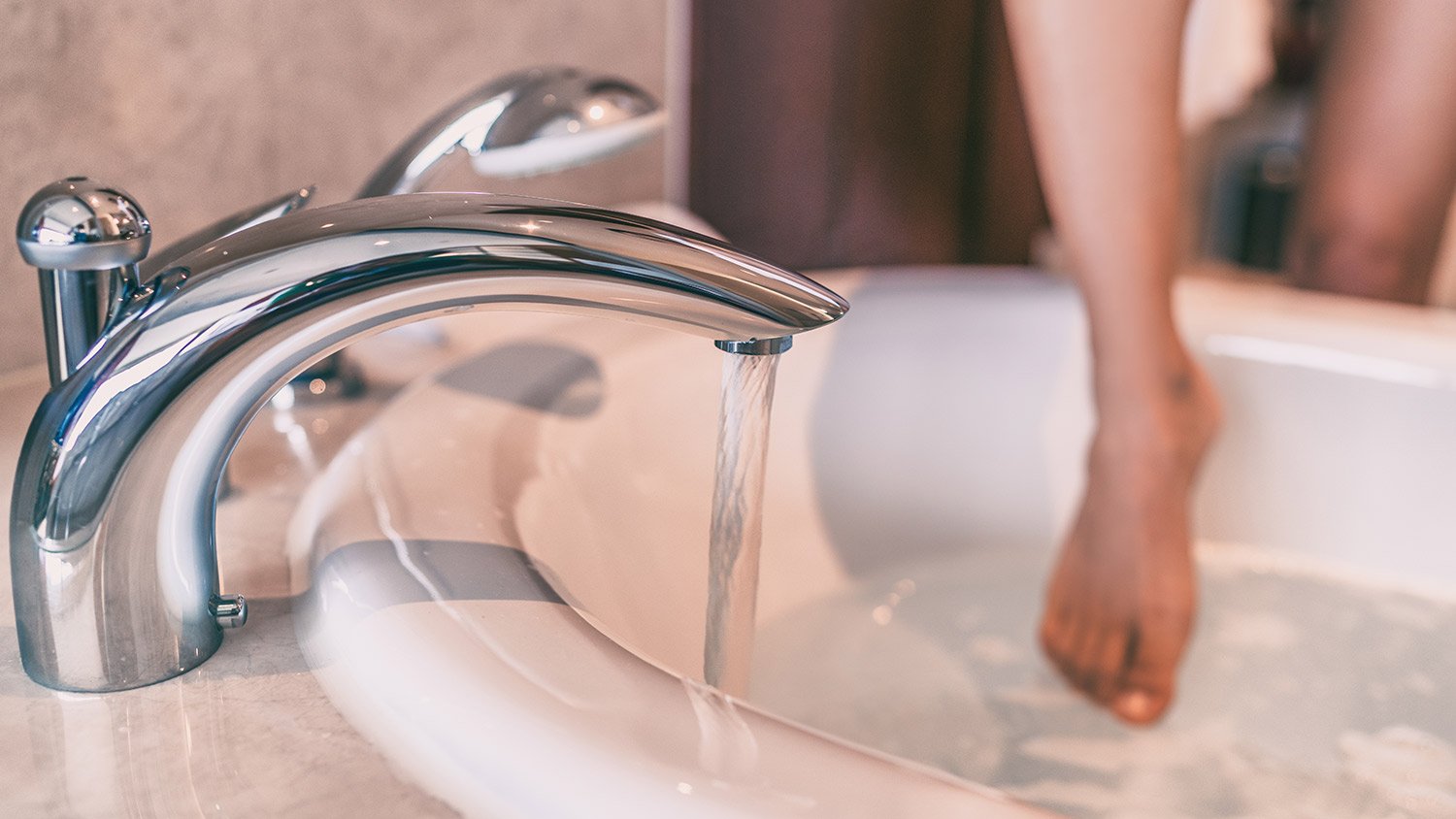What Size Tankless Water Heater Do I Need For My Home?
You may need a tankless water heater with a capacity of anywhere from 2 to 12 GPM


The flow rate of your home’s water fixtures is one factor in sizing your water heater.
Temperature rise is also crucial when sizing a tankless water heater.
Most tankless water heaters have a capacity of 5 to 10 (gallons per minute) GPM.
If you’re looking for a way to reduce your utility bills and save on energy costs, you might want to consider a tankless water heater. Unlike traditional water heaters, tankless water heaters don't store hot water, instead, they only heat the amount of water that you need at any given time, reducing energy use. Since they don't have a tank, they are sized based on how much hot water they generate per minute and the temperature rise. What size tankless water heater you need depends on the number of fixtures in your home and the temperature of the water coming into it.
What’s the Most Common Tankless Water Heater Size?
Tankless water heaters come in a range of sizes, from a flow rate of 2 gallons per minute (GPM) up to 12 GPM. The most common size is between 7 and 9 GPM, which should be enough to provide hot water to three or four fixtures in your home at the same time.
Factors to Consider When Determining Tankless Water Heater Size
Sizing the hot water heater system properly can help you to make your heaters as efficient as possible. Depending on the size of your home, the number of heaters, and your household size, you may need to install a tankless water heater with a capacity of 2 to 12 gallons per minute (GPM). Most tankless hot water heaters have a capacity between 5 and 10 GPM. The keys to determining the best tankless water heater size for you are flow rate and temperature rise.
Flow Rate

Flow rate refers to the amount of water the tankless unit can deliver at one time. To ensure that you don’t run out of hot water at an inconvenient time, your unit's flow rate should match how much water your household needs. For instance, if you're installing a tankless water heater in the kitchen, you should have a flow rate high enough to heat water for multiple appliances and water sources simultaneously, like running the dishwasher and washing your hands at the same time.
Temperature Rise

Temperature rise refers to how hot you need your tankless water heater to heat the water. The temperature rise of the tankless units installed in your home may differ depending on your needs. While the water temperature coming into your home will generally be around 50 degrees Fahrenheit, the desired temperature of the water leaving your sinks, appliances, and shower may be different from one another.
Household Size
| Household Size | Recommended Flow Rate |
|---|---|
| 1–2 people | 6-8 GPM |
| 2–4 people | 8-10 GPM |
| 4+ people | 10+ GPM |
If you’re having trouble determining the flow rate of the hot water taps in your home, you can use the size of your household to come up with a ballpark figure of the flow rate you need out of your tankless hot water heater. Small households of two people need a tankless heater with a flow rate of 6 to 8 GPM, while a larger household of four people requires a flow rate of about 8 to 10 GPM. Remember to factor in temperature rise when deciding how big of a tankless water heater you need for your household.
How to Calculate Tankless Water Heater Size
| Number of Fixtures | Recommended Flow Rate |
|---|---|
| 1–2 | 3.5 GPM |
| 2–3 | 5 GPM |
| 3–5 | 7+ GPM |
You can also calculate tankless water heater size based on the number of fixtures in your home that will use hot water, and how much they are likely to use. Add together the flow rate of all the fixtures that will connect to the tankless water heater. For example, if you have a shower that uses 2.1 GPM, a kitchen faucet with a flow rate of 2.2 GPM, a washing machine that uses about 1.5 GPM, and a dishwasher that uses 1 GPM connected to the tankless water heater, the total maximum flow rate would be 6.8 GPM.
Next, determine the target temperature, which is the water temperature you want the water in your home to reach. Most plumbing pros recommend setting the unit to 120 degrees, which is enough heat to shower comfortably, wash dishes, and do laundry.
Then determine how much your hot water heater will have to increase the temperature of the incoming water to reach your target temperature. You can figure this out by looking at a U.S. groundwater temperature chart, which tells you the temperature of the water coming into your home based on where you live. Once you have that number, subtract the groundwater temperature from your target temperature to determine the minimum rise for your tankless water heater.
For example, the chart shows that your groundwater is 72 degrees if you live in Orlando, Florida. In that case, your water heater needs to warm the water by 48 degrees to reach a target temperature of 120 degrees. If you live in Boston, where groundwater is a chilly 47 degrees, your water heater will need to raise the heat by 73 degrees to reach that target temperature.
Remember that the harder the tankless water heater has to work to reach your target temperature, the lower its flow rate.
What to Do if You Have the Wrong Size Tankless Water Heater

If your energy bills are higher than you'd expect or you're not getting enough hot water, you may have the wrong size tankless water heater. Installing a new, appropriately sized heater is the way to go. A local water heater installer can help you calculate the best size heater for your home based on household size, number of fixtures, and temperature rise.
The cost for a professional to install a tankless water heater costs between $1,300 and $3,700 on average.
Frequently Asked Questions
According to the U.S. Department of Energy, tankless water heaters are anywhere from 8% to 34% more efficient than regular water heaters. Exactly how much energy you’ll save depends on your household’s water usage. When you purchase a tankless water heater, you’ll also likely upgrade to more efficient technology than your current water heater, which can add to energy savings.
There are pros and cons to tankless water heaters. They are more efficient than traditional tank water heaters, and maintenance costs are lower. These units are also much more compact. On the other hand, they cost about twice as much to install as traditional tank water heaters and are more limited in terms of flow rate.
To properly size your tankless water heater, match your home’s peak hour demand (the highest energy use during a single one-hour period) with the water heater’s first-hour rating. This rating is the number of gallons of hot water the heater can supply each hour. Water heaters should have an EnergyGuide label with the first-hour rating in the top left corner.





- How To Install a Tankless Water Heater
- How to Size a Water Heater
- Can You Use a Tankless Water Heater in Cold Climates?
- Key Pros and Cons of a Tankless Water Heater
- 8 Reasons Your Tankless Water Heater Is Not Working
- What to Do if Your Tankless Water Heater Freezes
- Is a Tankless Water Heater Worth It?
- Tankless Water Heaters vs. Storage Tank: Key Differences
- How Long Does a Tankless Hot Water Heater Last?
- The 5 Biggest Myths About Tankless Water Heaters










